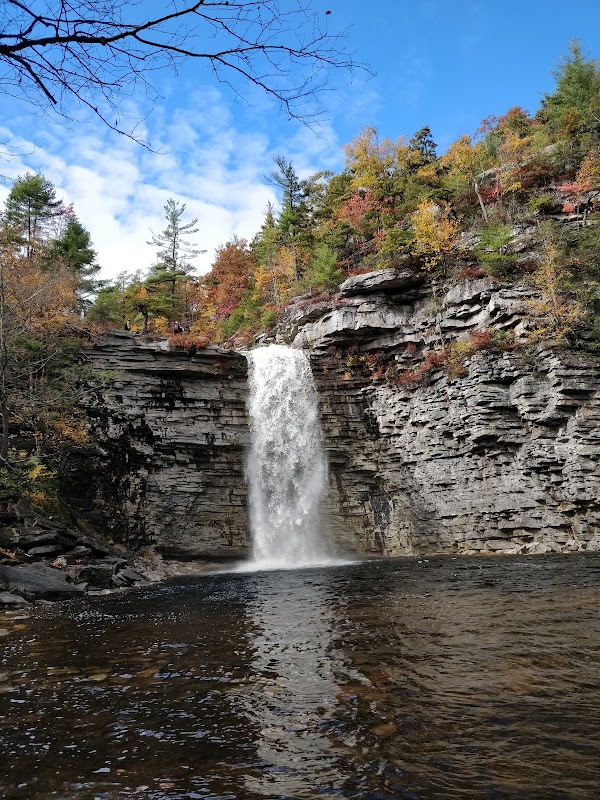
United Railroad Historical Society of NJ: The Local Favorite for Outdoor Activities in New York, New York
Just across the Hudson River, the United Railroad Historical Society of New Jersey offers a unique outdoor escape combining rail history and gentle hiking trails. Perfect for adventurers seeking fresh air and urban proximity, this heritage site invites you to explore scenic pathways and engaging railway rides while connecting with the region's industrial past.
Adventure Tips
Choose the Right Footwear
Wear sturdy hiking shoes or trail runners with good grip to navigate gravel paths and occasional muddy patches, especially after rain.
Stay Hydrated
Bring water bottles, particularly in summer months when humidity intensifies, to maintain energy and comfort during your visit.
Visit on Weekdays for a Quieter Experience
Avoid weekends if you prefer less crowd and better chances at guided rail rides, which offer deeper insights and scenic views.
Layer Your Clothing
Mornings can be cool in spring and fall; layering allows you to adjust as temperatures shift during the day.
United Railroad Historical Society of NJ: The Local Favorite for Outdoor Activities in New York, New York
When you think of outdoor activities in New York City, towering skyscrapers and busy streets come to mind before forested trails and historical rail exhibits. Yet, just a short journey across the Hudson, the United Railroad Historical Society of New Jersey (URHS) offers a distinct adventure that blends history, movement, and fresh air into a unique experience for locals and visitors alike. Though based in New Jersey, its proximity to New York City makes it a go-to spot for those seeking active, engaging outdoor outings within reach of the urban pulse.
The URHS operates an open-air railroad museum and a heritage rail line that invites exploration on foot and by railcar. Trails along the rail corridors rise gently, with elevation gains around 100 to 200 feet, suited for hikers looking for light activity with a historical twist. The terrain varies between gravel-packed paths and shaded, wooded segments where hardwood trees lean over tracks as if guiding travelers through time.
Sensory elements come alive. Rusted rail spikes, worn ties, and refurbished engines tell stories of industrial grit while birds dart through the branches, their calls riding on the breeze. The nearby Passaic River dares visitors with shimmering currents, pushing forward past the bridges and under the trestles. It’s an experience that respects the land’s fierce identity—both natural and forged by human hands.
Planning your visit around midweek mornings gives you space to navigate the grounds without crowds and better access to guided rides, which run seasonally. The ride itself spans roughly three miles one-way, ascending to an overlook where the river and rail meet—a rare vantage that rewards your effort without exhaustive strain.
Footwear with solid grip is a must; some sections hold loose gravel and mud after rainfall. Hydration is critical here, especially in summer months when humidity stretches the air thick and slow. The local climate invites layers year-round, as spring and fall mornings start crisp and warmth builds through the day.
Adventure here balances relaxed exploration with discovering the bones of New Jersey's historic rail infrastructure. It’s not a rugged wilderness trek, but the environment is fiercely present, demanding respect for its history and elements—not something to conquer, but a place to engage with thoughtfully.
For anyone seeking a practical outdoor excursion near the city, the URHS stands out. It offers fresh air, moderate physical activity, and a slice of Americana shaped by engines and rails—an invitation to step off the beaten urban path and walk through time.
Nearby Trips
All Adventures
Boat Charters
Water Activities
Adventures near Jersey City, New Jersey
Discover the unique and memorable adventures that make Jersey City, New Jersey special.
Frequently Asked Questions
Is the railroad still operational for rides?
Yes, the United Railroad Historical Society runs seasonal heritage rail rides along the restored tracks, typically available during special events and weekends in warmer months.
Are dogs allowed on the hiking trails?
Leashed dogs are allowed, but there are no specific dog facilities. Owners should be mindful of wildlife and ensure their pets are controlled at all times.
What is the best way to reach the URHS from New York City?
The quickest route is by PATH train to Journal Square in Jersey City, followed by a short taxi or rideshare to the URHS site.
Are there guided tours available?
Guided tours are offered during select events, providing detailed history and insights about the railroad’s operation and restoration efforts.
What wildlife can I expect to see on the trails?
Visitors often spot local birds such as hawks, woodpeckers, and occasionally river otters near the Passaic River sections.
Is there any admission fee?
Access to the trails is generally free, but rail rides and special exhibitions may require a ticket or donation.
Recommended Gear
Hiking Shoes
Provide traction and support for mixed gravel and uneven surfaces.
Water Bottle
Crucial to stay hydrated during warm and humid conditions.
Layered Clothing
Allows for quick adjustment to changing temperatures throughout the day.
Insect Repellent
Protects against mosquitoes and other insects active near wooded areas.
Local Insights
Hidden Gems
- "The rarely visited overlook east of the main station offers panoramic views of the Passaic River’s bends."
- "An old signal tower now serves as an informal historical display featuring restored rail artifacts."
Wildlife
- "Belted kingfishers dart boldly along the water’s edge."
- "Eastern box turtles occasionally cross less traveled footpaths in spring and summer."
History
"The URHS preserves New Jersey’s rail heritage from the 19th and 20th centuries, highlighting steam and early diesel eras vital to regional development."
